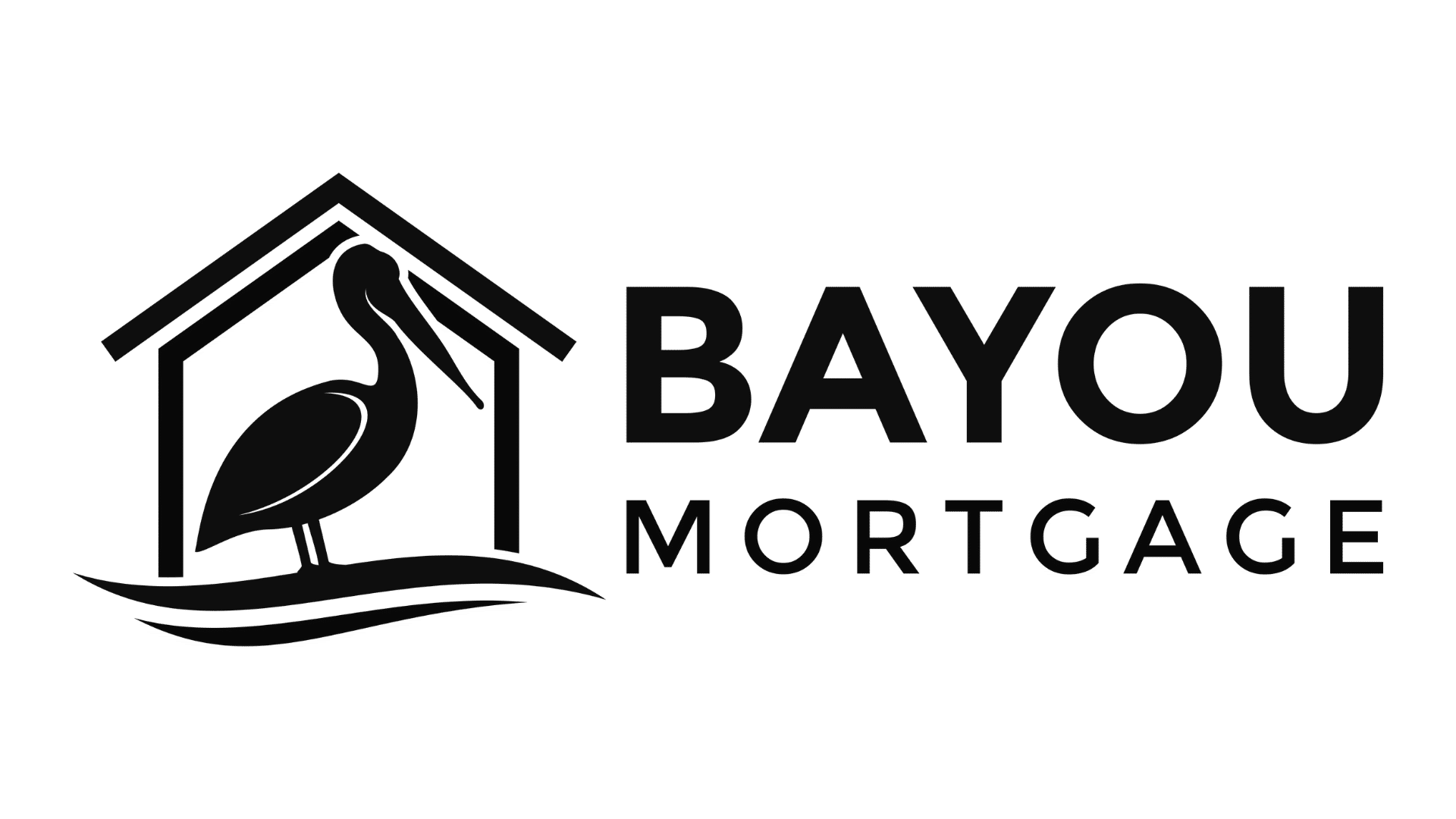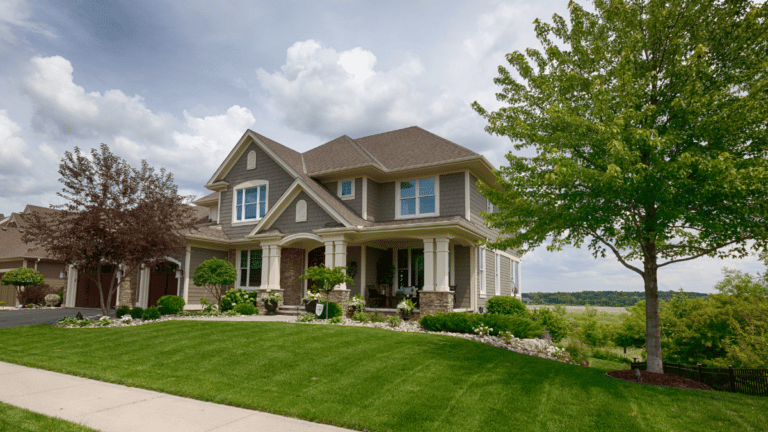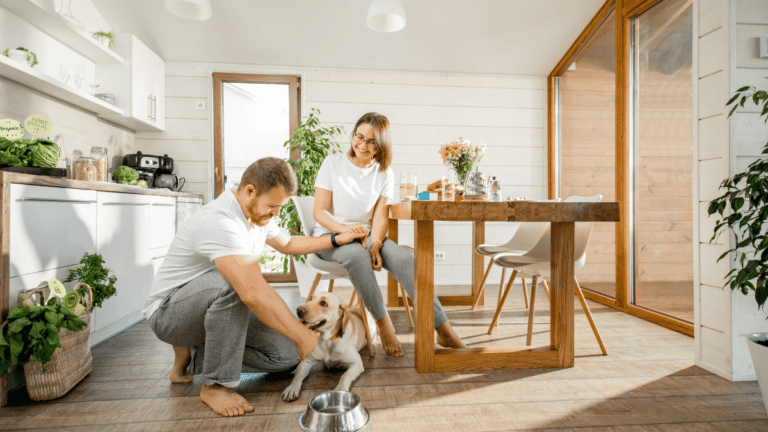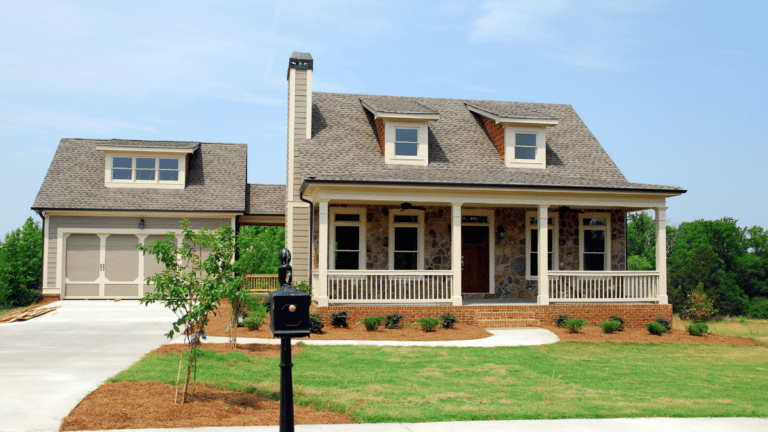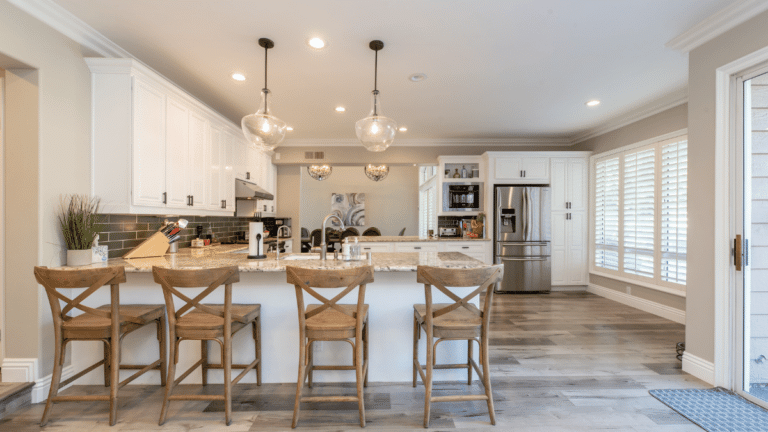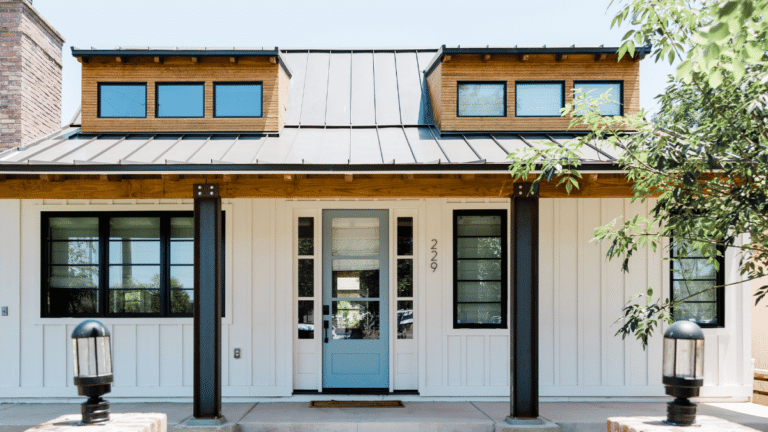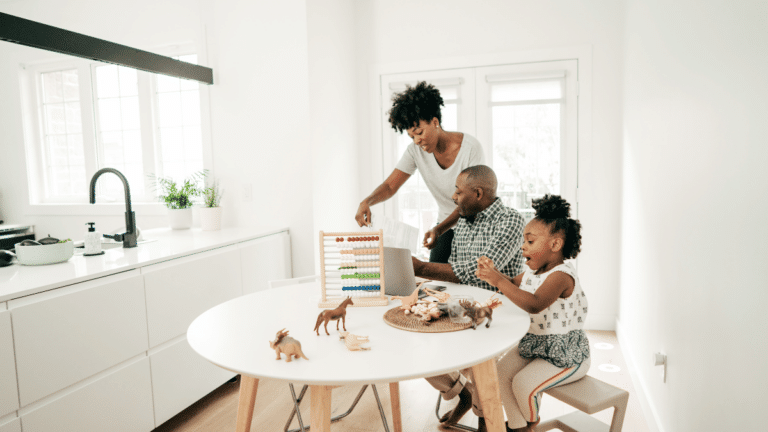What is a 3.2.1 Buydown?
A 3.2.1 buydown is a mortgage financing technique where the interest rate of the home loan is temporarily reduced for the first three years. Unlike a fixed interest rate, a 3.2.1 buydown lowers the rate by 3% below the note rate in the first year, 2% in the second year, and 1% in the third year, before returning to the original loan interest rate for the remainder of the term. This method offers an attractive path for homeowners to manage their initial mortgage payments, making homeownership more accessible in the crucial early years.
The structure of a 3.2.1 buydown not only provides immediate financial relief but also prepares homeowners for the gradual increase in mortgage expenses. It’s an especially appealing option for buyers who anticipate their income will grow over time or for those looking to mitigate the initial financial impact of purchasing a new home.
How Does a 3.2.1 Buydown Work?
A 3.2.1 buydown reduces a mortgage’s interest rate over the first three years, providing significant monthly savings. Here’s a breakdown of how it operates:
Year 1: The interest rate is reduced by 3% below the loan’s standard rate. This reduction lowers the monthly mortgage payments significantly, offering the homeowner substantial savings.
Year 2: In the second year, the interest rate is adjusted to 2% below the standard rate. While the savings are slightly less than in the first year, they still provide meaningful financial relief.
Year 3: The rate is reduced by 1% below the standard rate, continuing to offer savings, albeit smaller, before transitioning to the regular payment schedule.
Year 4 and Beyond: The interest rate returns to the original agreed.upon rate, and the homeowner makes regular mortgage payments as initially contracted.
This step.down approach allows homeowners to ease into the full cost of their mortgage payments. It’s particularly beneficial for those who expect their income to increase or who may be allocating financial resources towards furnishing a new home or other investments.
Example: For a $300,000 loan with a standard interest rate of 6%, a 3.2.1 buydown might look like this:
Year 1: 3% interest rate, offering a monthly payment significantly lower than at 6%.
Year 2: 4% interest rate, with monthly payments rising but still below the standard payment at 6%.
Year 3: 5% interest rate, closer to the standard rate, with a gradual adjustment to higher payments.
Year 4: and Onward: Payments adjust to the standard rate of 6%, and the homeowner pays the original agreed.upon amount.e
The 3.2.1 buydown mechanism offers a strategic way to manage finances in the critical initial years of a mortgage, providing a buffer as homeowners adjust to their new financial responsibilities.
Benefits of a 3.2.1 Buydown
The 3.2.1 buydown offers several advantages for both homebuyers and sellers, making it an attractive option in various situations. Here are the key benefits:
3.2.1 Buydown For Homebuyers:
- Lower Initial Payments: The most immediate benefit is significantly lower mortgage payments in the first three years. This can be particularly helpful for buyers who need financial flexibility as they settle into their new home.
- Ease into Homeownership Costs: The gradual increase in payments allows homeowners to adjust their budgets over time, rather than facing the full mortgage payment from the start.
- Increased Affordability: By reducing initial monthly payments, a 3.2.1 buydown can make more expensive homes accessible to buyers who might not qualify based on the full payment but can comfortably afford the reduced rates.
- Planning for Future Income Growth: For buyers expecting their income to increase over time, this buydown structure aligns well with their future financial outlook, allowing them to grow into their mortgage payments.
3.2.1 Buydown For Sellers:
- Attract More Buyers: Offering a 3.2.1 buydown can make a property more attractive to potential buyers by effectively lowering the cost of homeownership in the early years.
- Faster Sale: By providing a financial incentive like a buydown, sellers may find that their home sells faster in a competitive market.
- Higher Selling Price: Sometimes, the promise of lower initial payments can justify a higher selling price, benefiting the seller financially.
The 3.2.1 buydown is a powerful tool for managing the financial responsibilities of purchasing a home, offering benefits that can help smooth the transition into homeownership while providing strategic advantages in the real estate market.
Who Pays for a 3-2-1 Buydown?
The costs associated with a 3-2-1 buydown can be covered by various parties involved in the home buying process, depending on the negotiation and agreement terms. Here’s how it typically breaks down:
During negotiations, buyers might request that the seller cover the cost of a 3-2-1 buydown to make the home more affordable for them.
For new construction homes, builders or developers sometimes include a 3-2-1 buydown as a promotional offer to attract buyers to their properties.
Where’s The Money Go?
The funding for a 3-2-1 buydown typically comes from an upfront payment that’s calculated based on the difference between the standard and reduced interest payments over the first three years. This payment is often rolled into the closing costs and can vary significantly depending on the loan amount and the specifics of the buydown agreement.
The decision on who pays for the buydown is a critical part of the negotiation process and can be influenced by market conditions, the motivations of the seller and buyer, and the overall financing structure of the home purchase. It’s important for buyers to consider the long-term impact of this upfront cost against the benefit of reduced payments in the early years of their mortgage.
What’s the Difference Between a 3-2-1 Buydown and Buying Discount Points?
3-2-1 Buydown
- Temporary Reduction: The 3-2-1 buydown method provides a temporary reduction in mortgage interest rates for the initial three years. During this period, the interest rate decreases gradually each year, reverting to the original rate in the fourth year.
- Initial Savings: Homebuyers benefit from reduced monthly payments at the beginning of their mortgage term, offering immediate financial relief and making homeownership more affordable in the critical early years.
- Upfront Cost: This strategy involves an upfront payment made at closing, which can be covered by the buyer, seller, or another involved party. The initial investment facilitates the temporary lower payments.
Buying Discount Points
- Permanent Reduction: Unlike the temporary relief offered by a 3-2-1 buydown, buying discount points lowers the interest rate for the entire duration of the mortgage through an upfront fee paid at closing.
- Long-term Savings: The primary advantage of this option is the potential for significant long-term savings on interest, which can accumulate to a substantial amount over the life of the loan.
- Cost vs. Savings: It’s essential to evaluate the cost of purchasing discount points against the potential savings on interest. This option is most beneficial for those planning to stay in their home long-term, as the savings on interest can outweigh the upfront costs.
Key Differences and Financial Strategies
The most notable difference between the two options lies in the duration of their benefits. The 3-2-1 buydown offers a short-term solution with a temporary rate reduction, whereas discount points reduce the interest rate permanently.
Choosing between a 3-2-1 buydown and buying discount points depends on the buyer’s financial strategy. A 3-2-1 buydown may suit those expecting an increase in income, enabling them to handle higher payments in the future.
Conversely, buying discount points requires a calculation of the break-even point to ensure the long-term savings justify the upfront expenditure.
By carefully considering these options, homebuyers can make informed decisions that align with their financial goals and circumstances, effectively reducing their mortgage costs in a manner that best suits their needs.
How Much Does a 3-2-1 Buydown Cost?
The cost of a 3-2-1 buydown varies based on several factors, including the loan amount, the difference between the original and reduced interest rates, and the duration of the buydown period. Here’s a general guide to understanding the costs:
Factors Influencing Cost:
- Loan Amount: The larger the loan, the higher the cost of the buydown, as the reduced interest payments are calculated based on the total loan amount.
- Interest Rate Difference: The extent to which the interest rate is reduced in the first three years affects the overall cost. A larger reduction means more significant savings on payments but also a higher upfront cost.
- Lender Fees: Some lenders may charge additional fees for arranging a buydown, which can affect the total cost.
Calculating the Cost:
To estimate the cost of a 3-2-1 buydown, consider the amount of interest you’ll save over the first three years compared to the standard interest rate. This saving is essentially what you’re paying for upfront. For example, if a buydown saves you $300 on your monthly mortgage payment for the first year, $200 for the second year, and $100 for the third year, you would calculate the total savings and, thus, the approximate cost of the buydown as follows:
Year 1 Savings: $300 x 12 months = $3,600
Year 2 Savings: $200 x 12 months = $2,400
Year 3 Savings: $100 x 12 months = $1,200
Total Estimated Buydown Cost: $3,600 + $2,400 + $1,200 = $7,200
This calculation provides a rough estimate of the buydown cost. Actual figures will depend on specific loan details and lender terms.
Considerations:
- Break-Even Point: Evaluate how long it will take to recoup the upfront cost of the buydown through your monthly savings. This is crucial for determining if a buydown is financially beneficial in your situation.
- Future Plans: Your anticipated length of stay in the home can also influence whether the upfront cost of a buydown is worth the investment.
Understanding the cost of a 3-2-1 buydown is key to determining if it’s the right financial strategy for your home purchase. It’s a balance between immediate savings and long-term mortgage management.
Myths About 3-2-1 Mortgage Buydowns
Several myths surround 3-2-1 mortgage buydowns, often leading to confusion among potential homebuyers. Let’s debunk some of the most common misconceptions:
Myth 1: Only the Buyer Benefits from a Buydown
Truth: While it’s true that buyers benefit from lower initial payments, sellers can also benefit by making their property more attractive or selling it faster. In competitive markets, offering a buydown can be a powerful incentive.
Myth 2: Buydowns Are Only for High-Interest Rate Environments
Truth: Although buydowns can be especially appealing when interest rates are high, they can provide significant benefits in any market. The key is the relative savings and financial strategy, not the absolute interest rate level.
Myth 3: The Cost of Buydowns Outweighs the Benefits
Truth: The upfront cost of a 3-2-1 buydown might seem substantial, but it’s important to calculate the long-term savings and monthly payment reductions. For many, the initial expense is justified by the immediate cash flow relief and gradual adjustment to full mortgage payments.
Myth 4: Buydowns Complicate the Mortgage Process
Truth: While adding a buydown into your mortgage agreement introduces an additional element, reputable lenders like Bayou Mortgage are experienced in handling these arrangements smoothly. With proper guidance, the process can be straightforward and transparent.
Myth 5: A Buydown Is the Same as Getting a Lower Interest Rate
Truth: A buydown temporarily reduces your interest payments, unlike securing a mortgage with a permanently lower interest rate. It’s a strategic tool for managing payments in the short term, rather than an overall cheaper loan.
Myth 6: It’s Difficult to Qualify for a Buydown
Truth: Qualifying for a 3-2-1 buydown typically involves the same criteria as any mortgage application. The decision to opt for a buydown is more about financial strategy and negotiation between the buyer and seller or builder.
Understanding the realities behind these myths can help homebuyers make informed decisions about whether a 3-2-1 buydown aligns with their financial goals and home purchasing strategies.
How Much Does a 3-2-1 Buydown Cost?
The cost of a 3-2-1 buydown depends on several factors, including the original loan amount and the interest rate difference over the three years. Essentially, the cost is the sum of the interest savings for the buyer during the buydown period.
This amount is paid upfront at closing. The exact figure can vary widely based on the specifics of the loan and the agreed-upon terms between the lender and the borrower.
Can I Refinance After a 3-2-1 Buydown?
Yes, homeowners are generally free to refinance their mortgage after initiating a 3-2-1 buydown. Refinancing might be desirable if interest rates drop or if the homeowner’s financial situation changes. However, it’s important to consider any potential penalties, fees associated with refinancing, and whether the new loan terms offer a sufficient advantage over the current buydown terms.
Who Pays for a 3-2-1 Buydown?
The cost of a 3-2-1 buydown can be paid by the buyer, the seller, or even shared between both parties. Sometimes, sellers offer to pay for the buydown as an incentive to make the home purchase more attractive or to close the sale quickly. The arrangement depends on the negotiation outcomes between the buyer and the seller.
Can a Buyer Pay for a 3-2-1 Buydown?
Yes, a buyer can pay for a 3-2-1 buydown. This option can be particularly appealing for buyers looking to reduce their initial mortgage payments, making the transition to homeownership more financially manageable. Buyers may choose this option if they expect their income to increase over time, allowing them to easily absorb the higher payments after the buydown period ends.
